The 5 Best Climbing Brushes: Don’t Let Dirty Holds Stop You!

Published on: 01/01/2022
Whether you’re a serious rock climber or new to the sport, you should never leave the house without a brush! Alongside your chalk bag, the climbing brush is crucial for helping you stick to holds. Chalk and dirt build up on the holds of many routes, in the gym and outdoor, which can seriously affect your performance. With the right brush, you can get the route looking good as new, making a big difference to your climbing.
Still, there are so many climbing brushes out there to choose from. This can make it seem more complicated than finding the best climbing brush for you. So, we’ve made a guide with some of our favorite climbing brushes for 2021.
How we Selected our Best Climbing Brushes
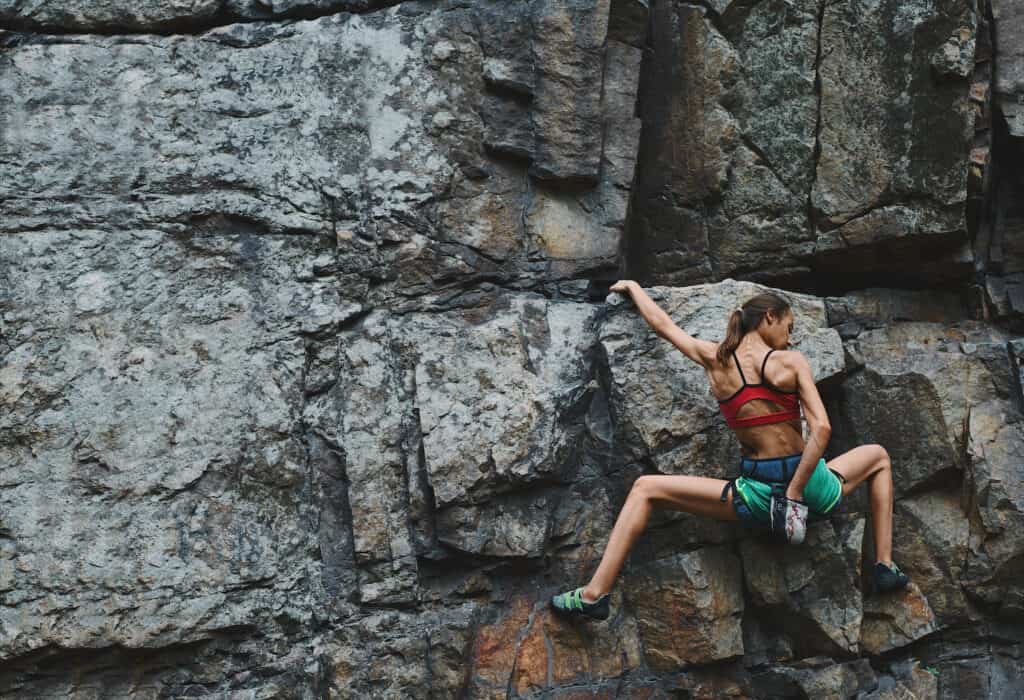
This year, we’ve had the opportunity to try a wide range of different climbing brushes. We’ve evaluated each one based on its performance and build quality. In addition, we have weighed them up against one another and tried out different applications for each brush. One essential part of our assessment was the ease of use and versatility. We have selected brushes that are easy to use and suit a variety of different applications.
Towards the end of 2021, we’ve settled on five particular brushes that, we feel, outperform the rest. Whether you’re looking for the best ergonomics or precision, you really can’t go wrong with any of the brushes on this list!
Our Selection of the Best Climbing Brushes for 2021
Here is our list of some of our favorite brushes for 2021. Each of these brushes has its strengths, and you’ll find that they are all fairly affordable. What’s more, they last well and can stand up to quite a beating. So, if you’re looking for your first climbing brush or a new one to complement the one you already have, you’ve come to the right place!
Comparison Table
| Name | Size | Bristle | Handle | Our Rating |
|---|---|---|---|---|
Metolius Boar Brush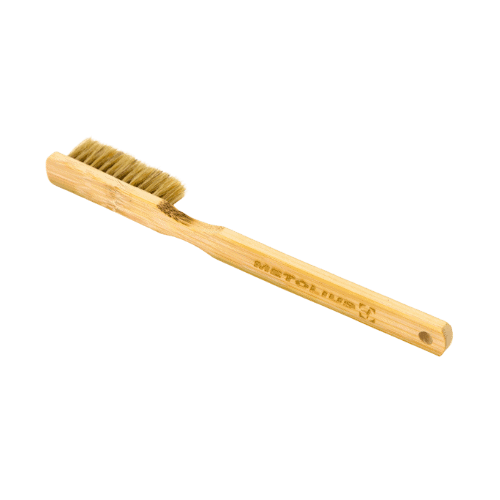 | Small | Boar | Bamboo | ★★★★ |
So iLL Distribution Brush 2.0 | Medium/large | Boar | Plastic | ★★★ |
Black Diamond Bouldering Brush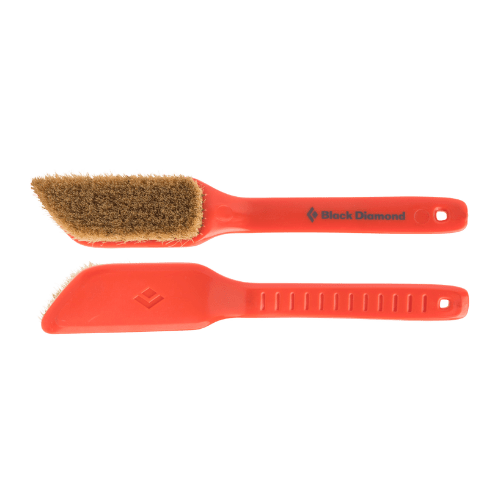 | Medium/large | Boar | Plastic | ★★★★ |
Mammut Micro Boulder Brush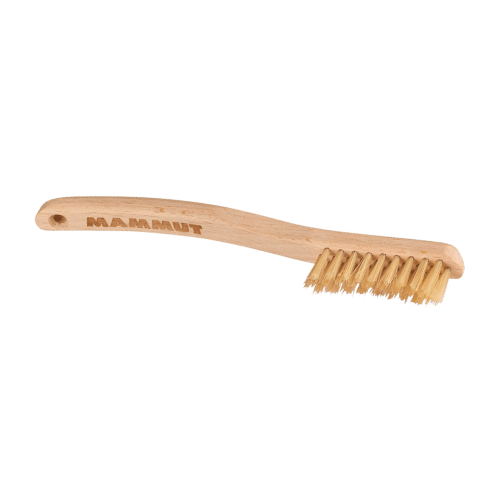 | Small | Natural hair | FSC-certified wood | ★★★★★ |
Metolius Razorback Boar | Large | Boar | Plastic | ★★★ |
1. Metolius Boar Brush: For Best Value

Retailing at only $4.95, this small brush by Metolius is a fantastic budget option for climbers looking for a versatile, lightweight brush. The bamboo handle is comfortable for long periods, and the bristles are of outstanding quality. Due to its smaller size, it might not be the best choice for cleaning huge jugs. Anything from tiny crimps to medium holds won’t stand a chance, though!
Pros
Cons
Analysis: Who is the Metolius Boar Brush for?
The Boar Brush by Metolius is a versatile model that most climbers will find easy to use and reliable. Still, if you climb widely varied terrain and are looking for one brush that can do everything, you might be better off with a larger model. The narrow brush head on the Metolius Boar Brush doesn’t translate all that well to the largest holds.
2. So iLL Distribution Brush 2.0: The Best for Distribution

Coming in a pack of two and sporting a rugged, bright plastic handle, the So iLL is a great distribution brush. If you’re looking for a brush on the larger end that can make quick work of packed chalk and dirt, look no further!
Pros
Cons
Analysis: Who is the So iLL Distribution Brush for?
Unless you are looking to get into the smallest cracks and spaces on the crag, the So iLL should be perfect for you. The brush is excellent for indoor and outdoor use, and it even has a sandpaper backing for callous maintenance!
3. Black Diamond Bouldering Brush: The Best for Boulders
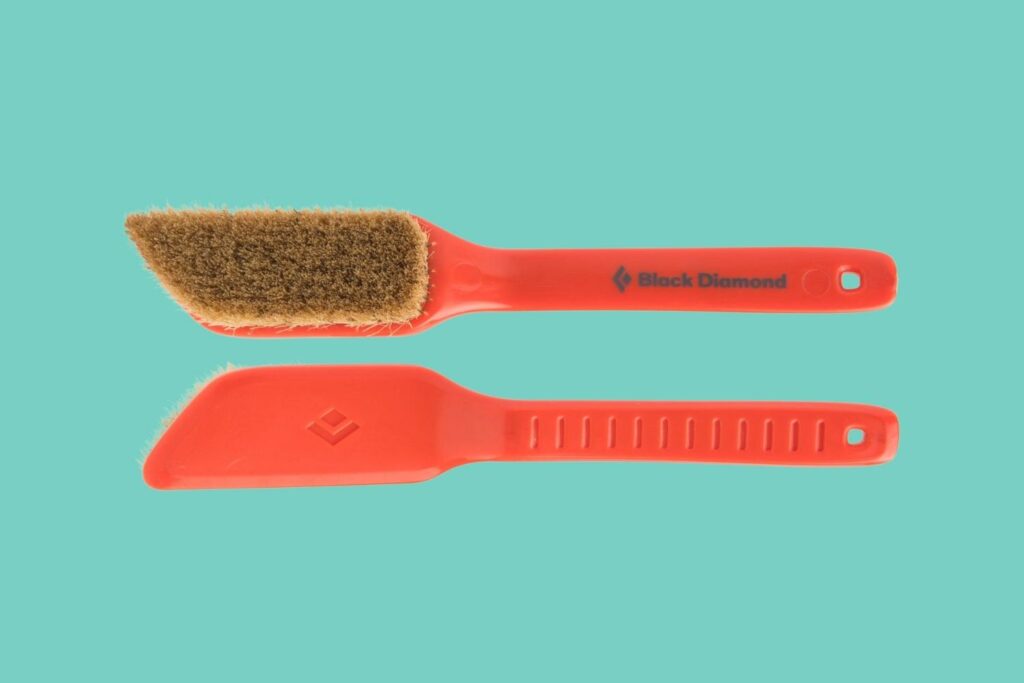
The Black Diamond bouldering brush is probably the most practical of all the brushes on this list. Its elegant design features a tapered head, making it possible to get into the tightest nooks and crannies. This is an element that most larger brushes lack, which we feel gives the Black Diamond a clear advantage here.
Pros
Cons
Analysis: Who is the Black Diamond Bouldering Brush for?
The Black Diamond Bouldering Brush makes a great addition to any brush set. With its stiffer bristles and tapered head, you can clean out almost any crack. Its main downside is the price point, being somewhat more expensive than the other entries on this list.
4. Mammut Micro Boulder Brush: The Best for Smaller Holds
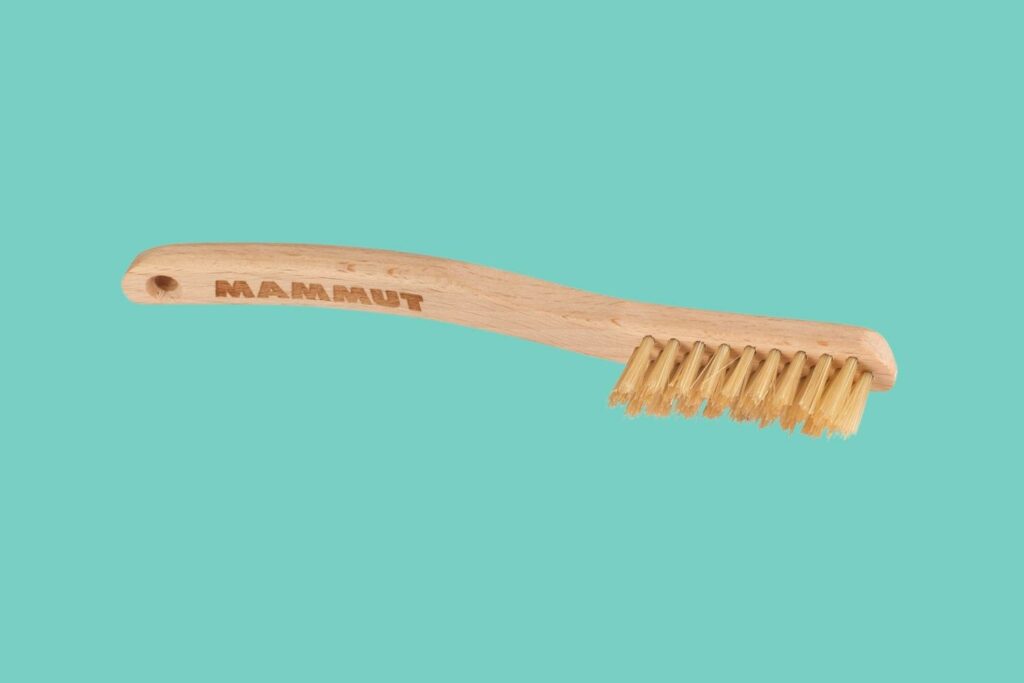
One of the challenges when using a brush with a wide head is cleaning out the smaller cracks or holds on a route. The Mammut Boulder Brush truly makes projects like these a breeze. It’s also one of the most popular brushes out there. If you have been to a climbing gym lately, chances are you have seen it.
Pros
Cons
Analysis: Who is the Mammut Micro Boulder Brush for?
Any climber looking for a brush that gives more precision or to use on smaller holds should look into the Mammut. It’s a great, reliable piece of gear. Our only real critique is that it’s just too small to be practical for brushing some larger holds.
5. Metolius Razorback Boar’s Hair Brush: The Most Ergonomic

With its chunky, molded handle, the Metolius Razorback might be the comfiest climbing brush out there. The ribs on the handle help avoid slippage throughout use, and the bristles use quality boar hair for outstanding results.
Pros
Cons
Analysis: Who is the Metolius Razorback Boar’s Hair Brush for?
The Metolius Razorback is genuinely a sublime climbing brush. It’s so comfortable to hold that you could probably work the brush for hours without breaking a sweat! As with the other large brushes on this list, it isn’t suitable for the smallest cracks or holds. However, it’s perfect in most other areas and works very well indoors and outdoors.
How to Find the Perfect Climbing Brush
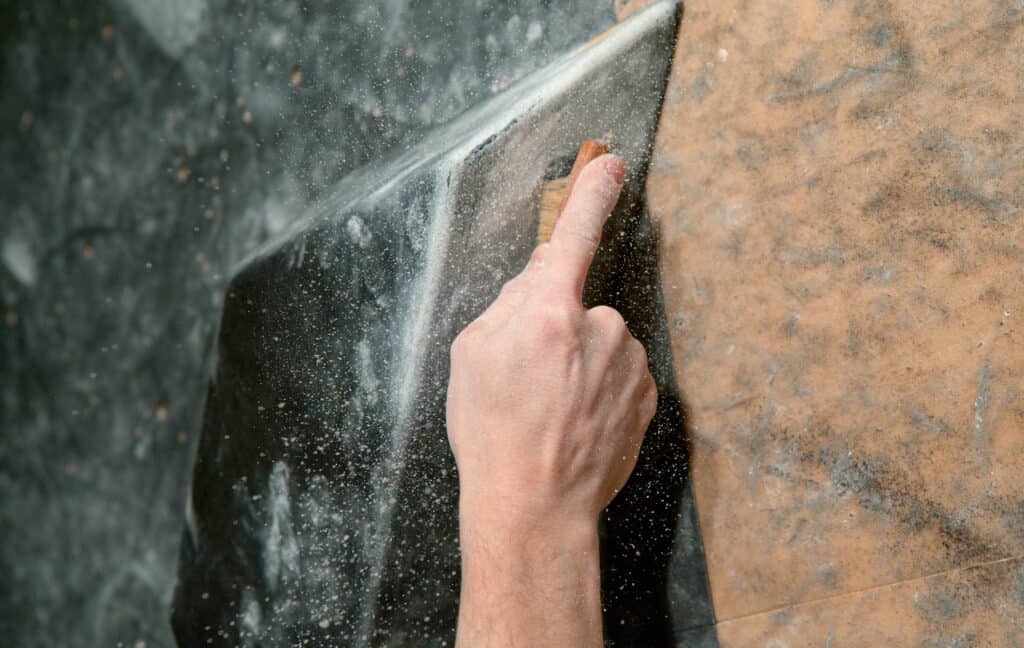
If you don’t already own a climbing brush, then you might be wondering how much you need one. Does cleaning holds at the gym or on the crag help you climb better? In short, yes! Whether you’re working with plastic holds or outdoors, clean holds make a difference.
Read on if you’re unsure what to look for in a climbing brush. We break this down in detail and provide you with some criteria to use in your search.
What is a Climbing Brush?
In short, a climbing brush is a brush that you use to clean climbing holds. Boars hair bristles on wood handle brushes are probably what comes to mind for most climbers when thinking about brushes. Still, some brushes are made of nylon, and some climbers also use brushes with wire bristles.
What a Climbing Brush Does
A climbing brush cleans dirt, chalk, or (in some cases) plastic residue off climbing holds. You can use a good brush both for outdoor and indoor climbing. However, brushes for climbing arguably get most of their use outdoors. This is because chalk and dirt build up on protected holds, and, in some cases, the rain doesn’t wash it away.
So, in short, a climbing brush brushes the buildup away or at least breaks it up. Some climbers prefer to use a smaller brush to break up the buildup on a hold. Then, they blow the buildup away. Some climbers bring pipes or tubing with them for holds that are difficult to reach! This allows them to blow the residue off the hold safely through the pipe or tube.
Which Materials Should a Climbing Brush Use?
Climbing brushes generally have wooden or plastic handles. Whether you want stiffer bristles, densely packed bristles, or softer bristles depends mainly on your preference. Some climbers use two or more brushes when rock climbing and switch them out, depending on the holds they are brushing.
Why is it Important to Have a Climbing Brush?
In certain scenarios, having a climbing brush can be a crucial part of you sending a route. Sometimes, the holds on a route can have so much detritus and chalk built up that they’re tricky to hold onto properly. If the route or holds are well-protected, then this isn’t something that will change on its own, either. Having a climbing brush with you can quickly help you get the holds back in shape.
Criteria to Keep in Mind
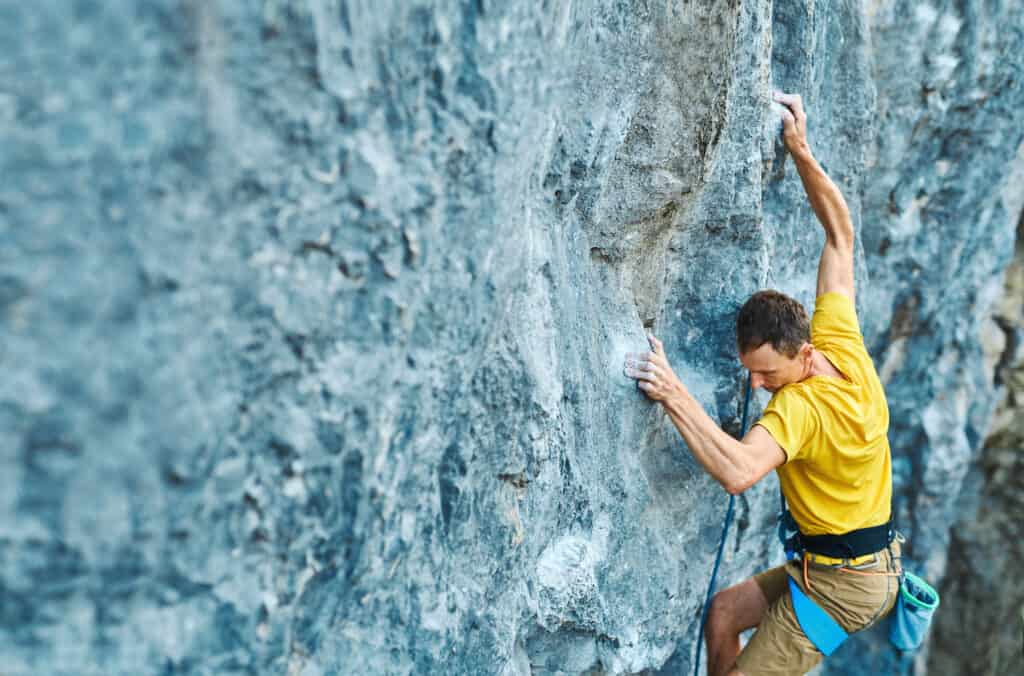
We do feel that what makes a climbing brush good is somewhat subjective. However, there are specific criteria and materials that we would recommend that you look for. Many of the best brushes have boar hair bristles and wooden handles, as we’ve already covered. These materials generally last a long time, meaning you can get a good amount of use from your brush.
Another thing to keep in mind is ergonomics. It’s generally a good sign if your thumb naturally rests along the side or handle of the brush. This suggests that the brush should be comfortable to use for longer sessions. Certain outdoor projects might require far more brushing than you’d expect, so it’s helpful to keep handle material and ergonomics in mind.
Finally, it’s always wise to keep an eye out for brand names that you recognize. Mammut is a well-renowned brand that makes quality brushes, for example. Sublime Brushes are another fan-favorite, and the Evolv bouldering brush has been making waves lately. If you’re not very familiar with the world of brushes, then reading reviews from other climbers can be incredibly helpful, too.
Tips
We advise against choosing anything with a wire bristle for outdoor climbing when looking for a brush. Such brushes tend to scrape and damage the rock. This is not only an aesthetic issue, but it impacts the integrity of the stone, too. Also, we would encourage you to avoid synthetic bristle in favor of boar hair. Boar hair lasts longer and stands up better to extended use.
Frequently Asked Questions

What are Brushes for in Climbing?
In rock climbing, brushes serve to brush holds. This is because holds tend to accumulate chalk and, when outdoors, dirt. If holds have a buildup of detritus, this can affect how well you can grab onto them. Using a brush can help you remove the gunk and buildup from the hold, making it much easier to grip.
Can you Use a Toothbrush as a Climbing Brush?
It’s not uncommon to see some climbers use a toothbrush instead of a climbing brush. Plastic brushes and nylon brushes may look and feel similar to a toothbrush, too. However, you will notice a difference in performance/quality if using a toothbrush for holds. This is especially true of outdoor use.
Different bristle
The main difference between standard toothbrushes and climbing brushes is the bristle. Your average climbing brush will have stiff bristles made of boar hairs. On the other hand, toothbrushes tend to have bristles that use nylon. A nylon bristle will be much softer than boar hair and won’t last as long. We use brushes to clean baked dirt and chalk off holds. So, you generally want a hard bristle that stands up to some resistance. Your average nylon brush won’t work as well as a climbing brush.
Different size
Another advantage that climbing brushes have over regular toothbrushes is that they come in different sizes and shapes. For example, if you need a brush to clean out smaller crevices, you can use smaller brushes. If you’re trying to clean huge volumes or large holds, you can get a larger brush. You can also choose brushes with soft or hard bristles, slim design, and so on. While toothbrushes vary in bristle stiffness, you don’t get the same variety with climbing brushes.
Use water if you’re going to go for a toothbrush
If you’re planning on using a toothbrush as a climbing brush, then you’ll need to bring some water with you. Chalk and dirt that is packed tight can be difficult for the softer bristles of your average toothbrush to break up. If you’d like to avoid the extra cost of a climbing brush, then you can use a toothbrush with water. This makes it easier for the toothbrush to clean out small cracks or dirt that is really fixed to a hold. You should be able to get most climbing holds reasonably cleaned up with a toothbrush, water, and some scrubbing.
How do you Use a Climbing Chalk Brush?
In short, there’s no right or wrong way to use a climbing brush. Some climbers will brush in a back-and-forth motion. Others work the brush in circles. The main thing that you need to think about is the holds you need to clean for a given project. Often, the holds that are the hardest to reach are the ones with built-up chalk and dirt. These holds are often sheltered and in awkward positions. More exposed holds get washed by the rain, or the wind blows away excess chalk and dirt.
There are essentially two ways to utilize a climbing brush. You can either use the brush to thoroughly brush away the chalk and dirt or loosen it up. Then, you can blow the debris off the hold. Whether you’re climbing indoors or outdoors, you’ll likely be working with holds that have chalk built up on them. In this case, you’ll generally want to try to leave the bottom layer of chalk alone. This can help with your grip, and you won’t need to use as much of your own chalk when on the route.
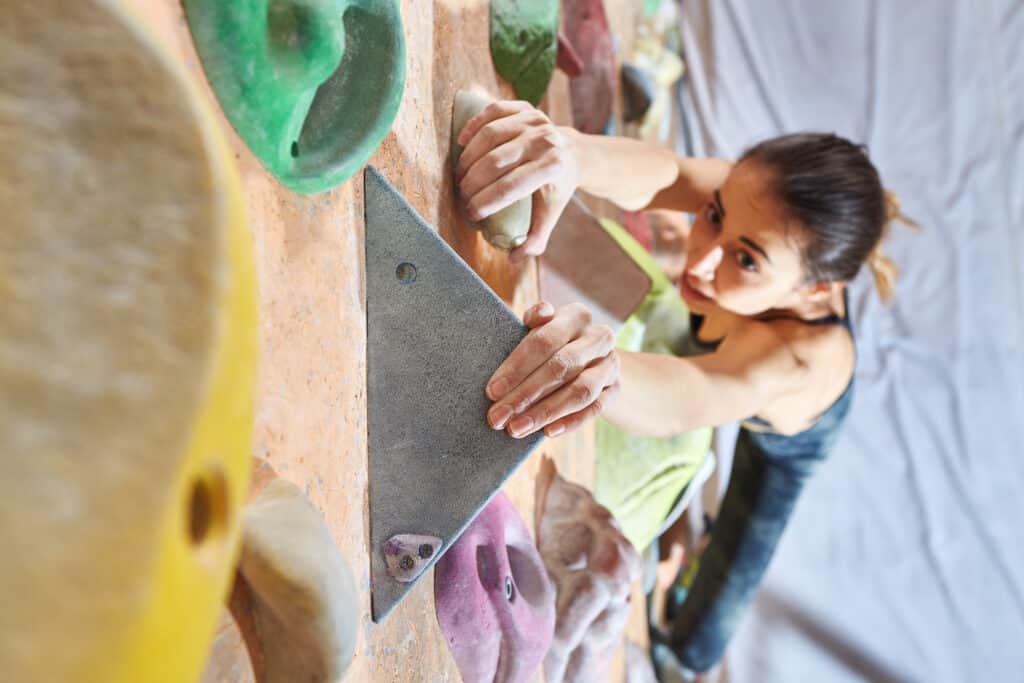
What are Climbing Brushes Made of?
Climbing brushes vary to some extent in their composition, like the handle material and bristles. Your average climbing brush uses either natural hair bristles from boar or stiff nylon in some cases. Plastic handles are common, while many of the best brushes have wooden handles.
You will also find climbers that use wire brushes to clean off holds. While wire bristles are very effective in removing debris from real rock holds, they aren’t the most eco-friendly option. Wire brushes can easily damage holds, as they tend to scratch up the rock. This has a direct impact on the integrity of the hold. So, while wire bristles make quick work of most chalk and dirt, we encourage you to use other brushes.
Are there vegan climbing brushes?
The only brand that makes vegan climbing brushes to our knowledge is Sublime Climbing (see here). All the brushes in this selection use natural hair bristle, mostly from boar, which makes them non-vegan. We didn’t include Sublime brushes in our selection because we don’t have experience with them yet but we plan to do in the near future. If you have tried them, please let us know in the comments what’s your feedback!
What Makes a Good Climbing Brush?
Honestly, climbing brushes are not the most technical piece of climbing gear out there. Exactly what makes a good climbing brush is somewhat subjective. Still, most quality brushes have some features in common. These include a sturdy, stable brush head and quality bristles. Boar’s hair bristles tend to last well and be pretty firm. Firmer bristles help you increase friction and hold up well to harder deposits of dirt and chalk.
We hope that this article has given you a better insight into the climbing brush world. Despite being a small, humble piece of kit, a good brush is crucial for many outdoor projects. It allows you to make holds much easier to use, which helps you send more routes. Opting for strong, natural materials like wooden handles and boar hair bristle can help you find a durable, quality brush.
So, what are you waiting for? Put the toothbrush down and grab something suitable for the rock!
